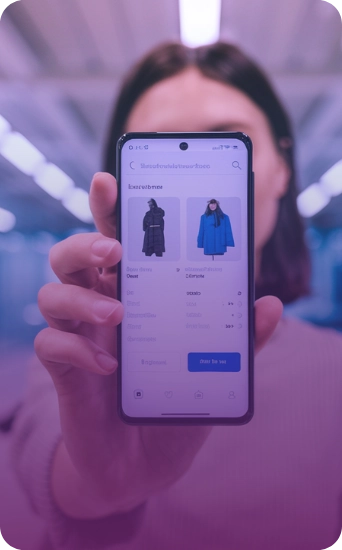The role of the front-end in the growth of mobile commerce
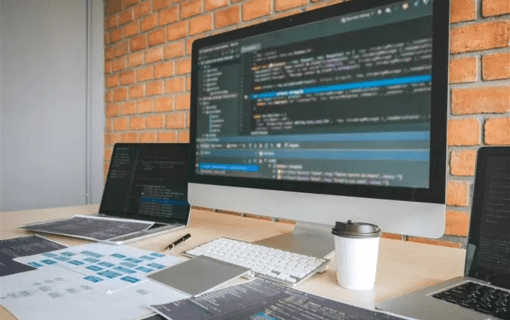
With the popularization of smartphones and the advancement of digital technologies, mobile commerce (aka m-commerce) has become one of the main online shopping channels. On average, 70% of online transactions already take place via mobile devices, according to content published by IT Forum, making it essential for companies to invest in optimized and fluid experiences. In this context, the role of the front-end in the growth of mobile e-commerce is crucial. The importance of the front-end in mobile commerce The front-end is the layer of the application that interacts directly with the user and is responsible for the entire visual and functional experience of a website or application. In m-commerce, where the user's attention is limited and competition is fierce, a well-designed front-end can be the difference between conversion and giving up on the purchase. The main challenges facing the front-end in m-commerce include: Adapting to different devices and resolutions The diversity of mobile devices, with different screen sizes and resolutions, requires responsive and adaptive interfaces. Tools such as media queries in CSS and frameworks such as Bootstrap or Tailwind CSS help to create dynamic layouts that adjust perfectly to any device. Loading speed Speed is a determining factor in m-commerce. Studies show that 53% of users abandon a website if it takes more than three seconds to load. An efficient front-end reduces loading times by using techniques such as image optimization, asynchronous loading of scripts and lazy loading. Intuitive and accessible navigation Usability is essential in m-commerce. Navigation elements such as simplified menus, appropriately sized buttons and straightforward checkout flows ensure an intuitive experience. In addition, following accessibility practices, such as adequate contrast and keyboard navigation, broadens the audience's reach. User experience: the engine of growth The front-end in m-commerce is not just an aesthetic issue; it is the engine behind a positive shopping experience. Here's how it drives growth: Advanced interactivity With the use of modern technologies, such as JavaScript and frameworks like React or Vue.js, it's possible to create highly interactive interfaces that engage the user. For example, product carousels, dynamic filters and personalized suggestions make the experience more enjoyable. Integration with mobile functionalities The m-commerce front-end can take advantage of native device features, such as geolocation, push notifications and biometric authentication, to offer personalized and secure experiences. Data-driven design Analysis tools such as Google Analytics and Hotjar help to understand user behavior. Based on this data, the front-end can be continually adjusted to meet the preferences of the target audience. Good practices for an efficient mobile commerce front-end To ensure a positive impact on m-commerce, the front-end should follow some good practices: Mobile-first design Adopting a mobile-first approach means designing with mobile devices in mind first. This guarantees light, functional and intuitive interfaces, prioritizing the essential elements. Loading time Loading speed is fundamental to success in m-commerce. Use techniques such as image compression, use of CDN (Content Delivery Network) and minimizing CSS and JavaScript files. In addition, implement strategies such as lazy loading to load only the visible elements and improve the overall performance of the page. Use of PWA (Progressive Web Apps) PWAs combine the best features of websites and native applications. They offer fast loading, can work offline and are installable on the device, providing an app-like experience. Continuous testing and iteration Regular usability testing is essential. Tools such as BrowserStack and Lighthouse allow you to simulate different conditions of use and evaluate the performance of the interface. Focus on SEO for mobile A well-structured front-end must take into account good SEO practices for mobile devices, such as friendly URLs, correct use of tags and reduced response times. This helps improve search engine positioning, attracting more qualified traffic. The growth of mobile commerce is directly linked to the quality of the user experience offered, and the front-end plays a strategic role in this process. Companies that invest in responsive, interactive and optimized interfaces are better prepared to win over and retain customers in the mobile environment. By aligning technology, design and usability, the front-end not only facilitates use, but also creates emotional connections that turn visitors into loyal consumers. In the competitive m-commerce market, offering an impeccable experience is not just a differentiator, it's a necessity.
Performance in online stores to sell more

Talking about performance in online stores isn't just about pages that load faster. It's about how every second counts for the consumer and how this directly impacts sales. For those in charge of a commercial operation, understanding the role of performance may seem technical or complicated, but it is an essential part of increasing conversions and delivering a shopping experience that builds customer loyalty. As a front-end development manager at a fullcommerce company focused on technology and the end consumer, I see on a daily basis how performance is connected to various areas of the business, including logistics, customer service, marketplaces and the media and UX teams. This article seeks to clarify, in a practical and accessible way, how to optimize the performance of an online store and why this should be a priority for anyone who wants to grow in e-commerce. Why does performance matter? The online shopping experience needs to be simple, fast and reliable. Studies show that slow pages can drastically reduce sales, because consumers don't wait: if the store doesn't deliver a fluid experience, they abandon the cart and go to a competitor. Now think about the impact of this on your business. A store that takes too long to load can frustrate paid media campaigns, waste opportunities on marketplaces and even generate more work for customer service, with consumers questioning problems on the site. All this generates costs and reduces profit margins. On the other hand, a fast and efficient operation creates consumer confidence and improves the entire purchase journey, from product research to checkout. Connecting areas to improve performance An efficient online store doesn't just depend on technology. It needs integration between the logistics, customer service, marketplaces and media areas. Let's explore how these areas connect with performance: 1. Logistics Consumers want to know precisely when they will receive their order. A logistics system that is well integrated with the website allows delivery times to be shown in real time at the checkout. This reduces drop-outs, improves the experience and creates predictability. However, if the shipping information is loaded slowly or is wrong, the customer will give up on the purchase. 2. Customer service When a website takes a long time to load or has errors, the first impact is on customer service, which receives more complaints. This additional flow of calls and emails could be avoided with a faster and more stable store. In addition, feedback from customer service is essential for identifying points for improvement in the digital experience, such as confusing forms or lengthy checkout steps. 3. Marketplaces If your store also operates on marketplaces, you need to ensure that stock and price information is updated quickly. Marketplaces penalize sellers for inconsistencies, and this can mean a loss of visibility for your products. In addition, the performance of the main site reflects on the experience of the customer who, on discovering your brand on a marketplace, may look for more information directly on your online store. 4. media and UX Digital media campaigns drive traffic to the site, but if the page doesn't load quickly, the investment is lost. That's why the development team and the media agency must work together to ensure that landing pages are fast and optimized for ads. In addition, UX (user experience) helps to design an intuitive and pleasant website, while technical development ensures that it works flawlessly. Performance and ROI: a direct relationship For those working in sales, an important metric is ROI (Return on Investment). Every dollar invested in paid traffic or marketplaces must bring a return. However, if the site is slow, part of this investment is lost. A practical example: during Black Friday, traffic to your store can increase by 50% or more. If the infrastructure can't cope with this volume, the site can crash, and sales are directly impacted. A page optimized to load quickly on any device ensures that more customers complete their purchases, increasing ROI. How to improve performance without being technical If you don't have a technical background, you can still ask your team or suppliers the right questions: - Is the site fast on mobile? Today, most online purchases take place on mobile devices. Make sure the site works well on these devices. How long does it take for a customer to complete a purchase? Simplifying checkout steps can significantly increase conversions. Are the most accessed pages optimized? Focus on the best-selling products and the landing pages of media campaigns. Performance in e-commerce is about more than speed: it's about offering the best possible customer experience while increasing operational efficiency. Fast, easy-to-navigate online stores that are well integrated with logistics, customer service, marketplaces and media not only convert more, but also create a loyal customer base. Regardless of the size of your operation, making performance a priority is essential to compete in an increasingly demanding market. And this starts with all areas of the business working together, always focusing on the end customer and the growth opportunities that e-commerce offers.
Are you ready for the next step? Learn how to start your e-commerce in 2025
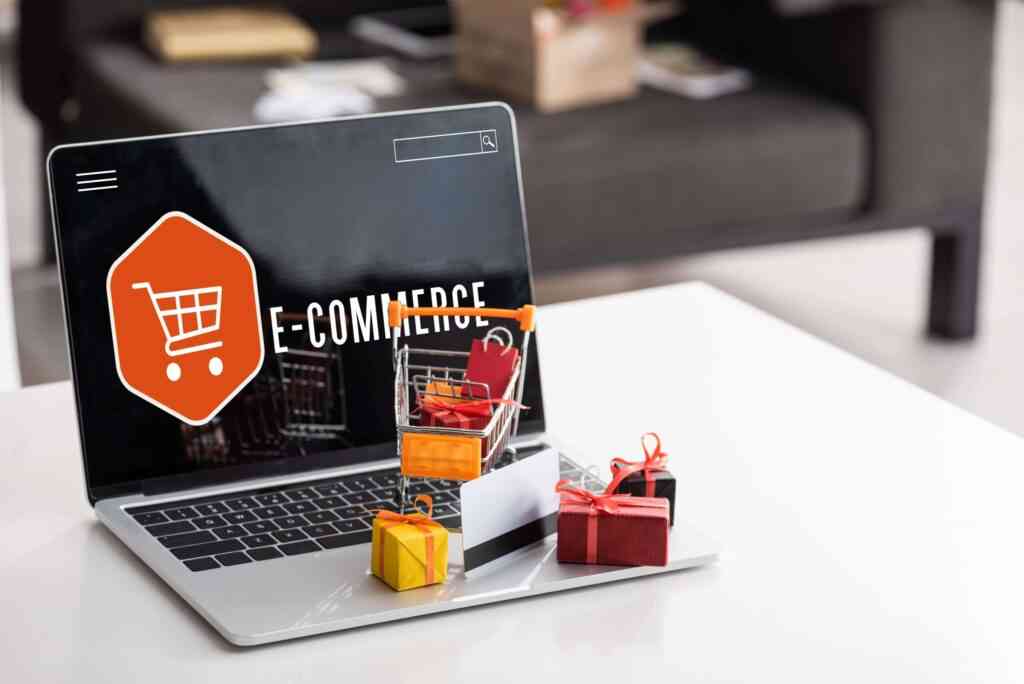
In recent years, e-commerce has shown accelerated growth around the world. In Brazil, by 2024, online sales are expected to exceed R$ 350 billion, driven by the increase in the number of digital consumers and the greater frequency of purchases. This scenario of continuous expansion leads us to an important reflection: What is the next step for my e-commerce? But the most important question to answer is: do you have a well-defined strategy for your e-commerce? Without this solid foundation, it is impossible to plan the scalability of the business efficiently. Having a clear strategy is like having a map that guides decisions and sets priorities. This is what enables sustainable and competitive growth. But before taking the next steps towards expansion, the starting point must be a careful analysis of the current operation. Understanding strengths, identifying weaknesses and mapping out opportunities for improvement are essential steps to building a successful e-commerce business. Importance of KPIs In order to scale an e-commerce business efficiently, it is essential to carry out a detailed analysis of the main performance indicators, the famous KPIs. This data acts as a complete X-ray of the operation, highlighting bottlenecks that may be limiting growth and directing efforts to the areas that really make a difference. Among the most relevant KPIs (apart from DRE) to monitor in your e-commerce operation are: Conversion rate: assesses how well the site manages to turn visits into purchases. Average ticket: reveals the average amount spent per customer on each order. CAC (Customer Acquisition Cost): indicates how much it costs, on average, to acquire a new customer. LTV (Lifetime Value): calculates the total value generated by a customer throughout their relationship with the brand. Reverse logistics: measures the costs and efficiency of managing returns. Items per order: indicates the average number of products purchased per transaction. OTIF (On Time, In Full): evaluates the delivery of complete orders within the stipulated timeframe. Contact rate: monitors the percentage of customers who need to contact Customer Service to resolve issues. Analyzing these indicators in depth allows you to understand the real performance of e-commerce and make strategic decisions that have a direct impact on results. After all, an action plan based on data is the basis for identifying opportunities and prioritizing changes with a focus on sustainable growth. After analyzing the KPIs, the next step is to use this data to identify bottlenecks and implement a strategic plan to overcome them. Among the various possibilities, expanding the product portfolio stands out as an effective solution for attracting new customers and increasing the average ticket. Here are some tactics that can make a difference: Creating kits: Combining complementary products in a single package not only increases perceived value, but also encourages higher-value purchases. Using CRM for repurchase: Customer relationship management tools allow you to segment your base and send personalized offers, increasing the chances of loyalty. Exclusive products or pre-sales: Offering items that can only be found in your e-commerce helps to differentiate the brand and attract consumers who are looking for something unique. Complementary services: Options such as extended warranties, technical assistance and product customization add value to the customer experience and strengthen the bond with the brand. With these strategies, your e-commerce not only delivers differentials, but also positions itself more competitively in the market, ready to grow sustainably. Invest in the experience The customer experience plays a fundamental role in the success of any e-commerce, and the adoption of innovative technologies can take this experience to a new level. The use of artificial intelligence in customer service, with chatbots and virtual assistants, not only reduces costs, but also speeds up service. Personalized recommendation systems, which suggest products based on the customer's history, increase conversions. Predictive analysis tools, on the other hand, help to optimize stocks and avoid stock-outs, providing a more efficient and satisfying purchasing journey. Essential points for growth Having a robust e-commerce platform is crucial to supporting increased traffic and sales. It's important to focus on a few key points: Fast loading: Slow sites compromise the user experience and negatively impact SEO. SEO: Investing in search engine optimization is fundamental to guaranteeing organic visibility. Purchase journey: Simplifying the purchase process helps reduce cart abandonment rates. Logistics is a happy customer Logistics, essential for e-commerce, can be a decisive differentiator in customer satisfaction. Staff productivity is key to ensuring logistical success, and initiatives such as training and automation boost operational efficiency. Strategic freight negotiations, with competitive terms and attractive costs, meet public expectations. In addition, well-structured processes minimize errors, optimize flows and speed up deliveries, ensuring a more agile and efficient operation. The market is growing Scaling e-commerce requires planning, execution and constant monitoring. By developing a well-defined strategy, based on careful analysis of KPIs and the adoption of good practices in products, technology, platform and logistics, it is possible to achieve significant results and sustain growth in the long term. The e-commerce market is in full evolution. In order not to be left behind, you need to act quickly and precisely. Is your brand ready to take the next step?
Social estimates a projection of 485% at the end-of-year party, compared to last year

Christmas and the end of the year are synonymous with gifts, joy and prosperity - values that Social Digital Commerce has incorporated into its actions to end the year on a high note. With a portfolio that exceeds 80 clients, Social is the fastest-growing full-service company in Brazil, as well as expanding its international operations to Europe, reinforcing its trajectory of continuous growth. In this scenario, the market is also reflecting positive expectations. According to ABECS, R$50 billion in sales are expected this Christmas, and Brazilians are expected to spend an average of R$446 on gifts this year. The main items chosen as gifts will be: clothes (60%), toys (42%), footwear (18%), perfumes and cosmetics (15%), electronics (5%), accessories (4%), household appliances (3%), household utensils and books (2% each). This month, Social Digital Commerce estimates a projection of 485% compared to last year. Among the clients who are taking advantage of the Christmas spirit to boost sales, Concha Y Toro, the renowned wine producer and exporter, is a successful example. The brand is investing in sophisticated options for Christmas gifts, such as the Diablo and Pedro Jimenez labels, which are perfect for special occasions. In addition, Concha Y Toro has launched a special personalization action for the Dom Melchor label, allowing consumers to engrave names or phrases of up to 18 characters directly on the bottle. This initiative combines sophistication and exclusivity, aligning perfectly with the spirit of the end-of-year festivities. With a 2024 full of achievements and strategic partnerships, Social Digital Commerce continues to reaffirm its commitment to innovation and excellence, closing the year with new conquests and preparing for an even more promising 2025.
Digitalks Ads: check out the best insights from the event!

On March 6, representatives from Social Digital Commerce's Marketing Intelligence hub team took part in Digitalks Ads & Digital Marketing on Wednesday, March 6, an event that discusses the main trends in digital advertising and marketing. There were six hours of content and talks on Artificial Intelligence, Retail Media, Branding, SEO, Neuromarketing and others. Check out some of the insights from Digitalks Ads & Digital Marketing: Artificial Intelligence: it's a tool that optimizes the marketing routine, because in addition to contributing ideas, it enhances creative processes. Leopitapos Barcellos, creative director at Holding In.Pacto. SEO: highlights the authority and relevance of content, helping to position the brand at the top of search pages. Felipe, CSO at Hedgehog Digital Retail Media: Using *Omnichannel campaigns that unite online and offline data strategy can bring great **Retail Media results for the brand. Caroline Mayes, VP of Relevanc in Brazil and Pamela Dias, Food Media Manager at Unilever. Branding: has a direct impact on business performance, achieving consistent growth in customer retention, as well as consumer recurrence and loyalty to brands. Guta Tolmasquim, CEO of Purple Metrics. Social Commerce: favors strategies on several fronts, taking into account all the user's points of contact, both online and offline, generating yet another point of impact for the consumer.Renata Gerez, Head of Social Commerce LATAM at Mercado Libre. Neuroscience: applied to marketing brings relevance to the brand. It's important to understand consumer behavior based on context and the triggers that influence the decision-making process. Perla Amabile, Founding Partner of Be Intelligence. Want to know more about Social's Marketing Intelligence hub? Go here!
Social Digital Commerce and Wake sign partnership that will revolutionize full commerce!
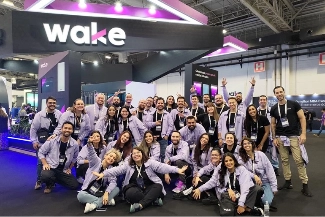
Seeking to establish greater scalability and versatility, increase the range of products for both the B2B and B2C markets and boost e-commerce productivity, Social Digital Commerce has signed a strategic agreement with Wake. Together, the companies project an increase in turnover of R$300 million in the first year of the partnership. Under the agreement, Social will rely on Wake's technology and real unified ecosystem to orchestrate all related e-commerce services more efficiently. As a result, companies in Social's portfolio that require an end-to-end solution for their operations will be able to count on the robustness of the partner. Also contributing to the partnership is the fact that the companies serve clients in common. This affinity led to the realization that excellence in technology and services demanded even closer collaboration, with a focus on accelerating and meeting market needs more effectively. Today, Social offers solutions for leveraging business, with options for expansion beyond digital sales and into the international market. Wake works in the digital management of consumer journeys, from customer attraction to customer loyalty, including conversion and transactions, with artificial intelligence DNA. According to Ricardo Onofre, founder and CEO of Social, the lack of resources or expertise for companies that need to improve their e-commerce operations is one of the main pains of the current market. The executive is confident that the union with Wake will help the company act more actively to solve this challenge. For Alessandro Gil, Wake's VP, the partnership with Social Digital Commerce reinforces the company's commitment to offering successful e-commerce operations, focused on efficiency and results, with complete and innovative solutions for customers. The union between the operations, said the VP, should make it possible to meet market demands more effectively.
Black Friday 2024: check out our customers' unmissable discounts

Our #BlackWithoutLimits is focused on providing the best offers and also the best service experience for customers and consumers. Agile deliveries on this very special date for online retailers continue to be guaranteed, maintaining operational excellence throughout the year, even in the face of the high volume that the date brings. Last year, we recorded an average of four items per order, with 90% of deliveries made on the same day. And now, we expect a 3.5x higher volume of orders during the four main days of Black Friday (28/11 to 01/12) compared to 2023, reaching an average of 6,000 orders per day! Want to be part of this historic Black Friday? Activate #ModoFull and take advantage of these unmissable discounts!
5 Strategies to Sell More on Black Friday in the Digital Marketplace

Black Friday is one of the most important and competitive dates in e-commerce. With digital consumer behavior being very different from physical retail, success depends on specific and well-planned strategies. Although the date is approaching, there is still time to adjust your actions and make the most of the opportunities. Tools such as Neotrust Confi's Black Friday Hour by Hour Platform, combined with our marketing, sales and logistics services, allow for quick changes, with data updated in real time, guaranteeing precise and agile decisions. Here are 5 ways to boost your sales and stand out during Black Friday: 1. Use Market Analysis for Effective Campaigns Successful campaigns go beyond internal data. With a market analysis platform, you can identify trends in consumer behavior, best-selling categories and competitors' winning strategies. 2. React in Real Time to Results During Black Friday, tracking key indicators such as sales and conversions in real time is essential. This allows for quick adjustments to campaigns still in progress, maximizing results while the public is engaged. 3. Adopt the Full Digital Commerce Model On Black Friday, integrating strategy and operations is essential. The Full Digital Commerce model brings together marketing, logistics and data analysis in a single service, guaranteeing agility and efficiency in such a dynamic period. 4) Synchronize stock with demand Managing stock strategically is a competitive differentiator. It is essential to have a clear vision of the relationship between sales and stock, avoiding stock-outs of popular products or excesses of less sought-after items. 5. Create Personalized Experiences with Data Personalization is the key: the Black Friday consumer is looking not only for price, but also for relevance. Use data to understand preferences, buying habits and the most popular payment methods. Why invest in Full Digital Commerce and Data Analysis on Black Friday and seasonal dates? Combining the Full Digital Commerce model with advanced data analysis tools offers the best solution: On Black Friday, planning smartly and acting quickly sets winning brands apart. The combination of operational expertise and insights turns opportunities into concrete results. Turn data into results and achieve success! If you want to boost your sales on Black Friday, count on our Full Digital Commerce services and Confi Neotrust's data analysis to create a winning strategy.
Do you know what Fulfillment is?
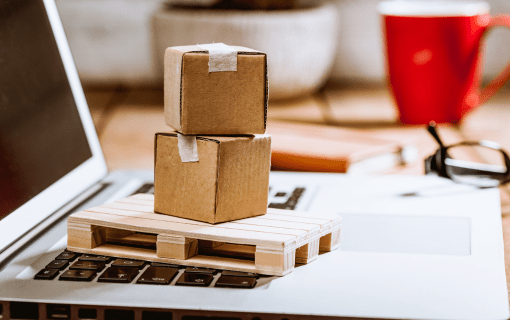
When we talk about a Full Digital Commerce company, one of the services offered to clients is Fulfillment. This excellent service integrates strategies, optimization, management and execution of logistics activities. Fulfillment covers all the processes from ordering to stock picking, packaging, delivery and after-sales service. This service can be carried out directly by the flagship or through third-party companies. In order to guarantee an excellent shopping experience, Fulfillment follows essential stages: Receipt of orders The first stage of Fulfillment is when the company receives and registers the products in stock. This process is fundamental to the organization of Fulfillment. Inventory At this stage, the products are carefully stored, ensuring that they are in optimum condition for sale. This is also where product expiry dates are checked. Picking This process consists of collecting the products according to the specifications of the customer's order, such as color, model and size. Efficient organization in the previous stage facilitates picking, allowing items to be found quickly. Product packaging Packaging is essential to guarantee a satisfactory shopping experience. Packing products correctly ensures that they arrive at their destination in perfect condition, preserving their quality. Delivery and transportation Here, the delivery times are indicated to the customer, who will be waiting for the product at their final address. After-sales After delivery, the company should offer customer support to answer any questions about the product. It is also advisable to send out a satisfaction survey to obtain feedback and improve future sales. At Social, we offer the Fulfillment service to our customers! Contact our team of experts to find out more.
Tips for good shopping on Black Friday

Black Friday 2024, scheduled for November 29, is expected to generate more than R$ 11 billion in Brazilian e-commerce, according to estimates by ABComm (Brazilian E-Commerce Association), which represents a growth of 10.2% compared to the previous year. Although inspired by the United States, the Brazilian version has unique characteristics, especially with the concentration of major online promotions in categories such as electronics, household appliances, books and furniture. The "Black Friday 2024 Trends" survey, published by Confi/Neotrust, projects that digital commerce in Brazil will reach R$ 9.3 billion just between the Thursday and Sunday of the event. For consumers to take advantage of the date in a safe and advantageous way, it is essential to pay attention to some important aspects in order to identify legitimate offers, avoid pitfalls and ensure a smooth and satisfactory shopping experience. Is it reliable? During Black Friday, scammers often replicate the look of well-known stores to confuse consumers and scam them. To ensure that you are buying from a safe source, it is essential to check the store's official URL. Avoid clicking on links received via SMS, email or social media, as these channels are commonly used in phishing attempts. Prefer to type the address directly into the browser and always check for the SSL (Secure Sockets Layer) security padlock to the left of the URL, an indicator that the page is secure. Additional seals, such as "secure store" or "shielded site", can also help confirm the reliability of the e-commerce. Real promotions To enjoy Black Friday without falling for misleading promotions, price monitoring is essential. Currently, there are several websites and apps that track price history, allowing you to identify the variation over time and avoid "half price" promotions. One tip is to start your price research weeks before Black Friday, establishing a reference value for the products you want to buy. This way, you avoid falling for false offers and focus on genuine discounts. Discount coupons and cashbacks During the month of Black November, many brands offer discount coupons and cashback programs as part of their promotional strategies. These campaigns are often publicized on the stores' official websites, in live broadcasts and even in partnerships with digital influencers. To save even more, keep an eye out for relevant promotional coupons and analyze the conditions of cashbacks, which can prove to be advantageous. It's worth remembering that the discount isn't always on the initial value of the product, but on the return offered through cashback, a practice that has been widely adopted by retailers and should gain even more strength this year. Deliveries Due to the high volume of sales during Black Friday, many companies adjust delivery times to accommodate the increase in demand and avoid logistical problems. If you need the product for a specific date, it is essential to check the delivery time before finalizing the purchase. Also, consider the possibility of delays and, if you have an urgent need, opt for options such as "Click and Collect", a solution offered by some stores to guarantee faster and safer delivery. Planning In the midst of so many offers and discounts, it's easy to get carried away and end up spending more than planned. That's why setting a specific budget for Black Friday is an essential strategy to ensure that you take advantage of the promotions in a conscious way. Make a list of the products you really need or want, prioritizing the most necessary purchases. Also, be careful with purchases made in installments, which could compromise your budget in the coming months. According to data from ABComm, the average purchase ticket for Black Friday 2024 is projected at R$ 738, an increase on last year's R$ 705. This data helps establish a spending benchmark and makes planning even more important for a positive shopping experience. These five tips will help you plan your shopping better and avoid unwanted surprises during Black Friday 2024. With a careful eye on the reliability of websites, price monitoring, coupons and cashback, delivery planning and budget control, you'll be able to identify real savings opportunities and take advantage of this date safely and intelligently.

